#catherine marion
Text

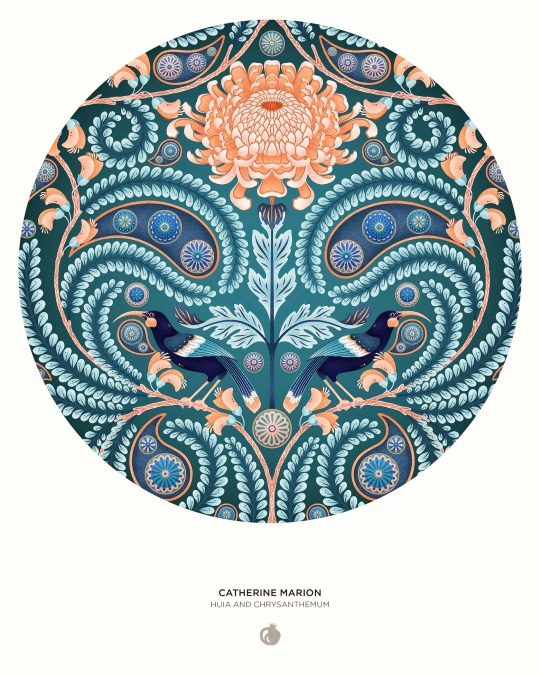

Catherine Marion, Huia and Chrysanthemum
#catherine marion#women artists#huia bird#extinct animals#extinct birds#new zealand#maori#maori culture#graphic design#graphic art
73 notes
·
View notes
Photo
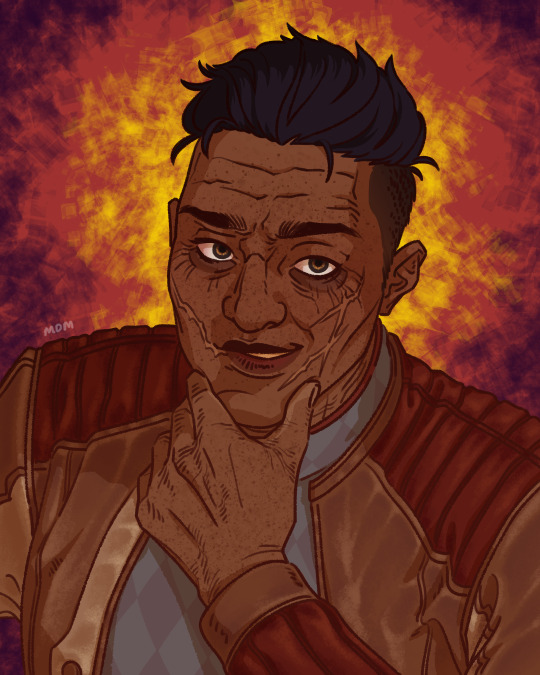
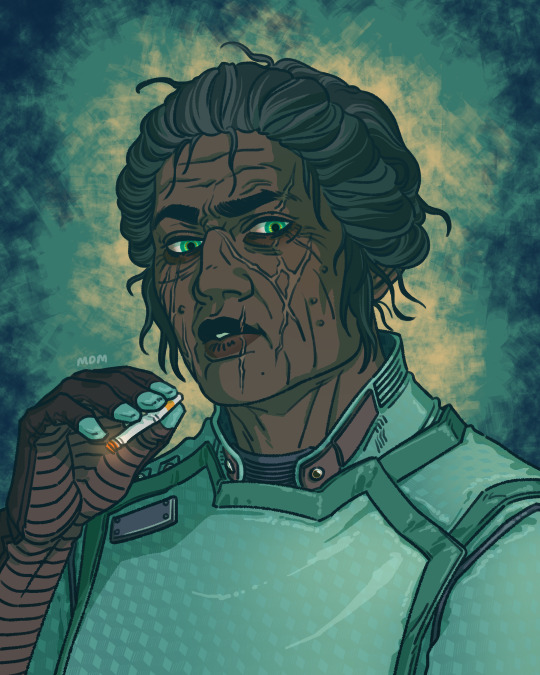

🔪7🧊7🎖️
---
mdz
#THANK U SO MUCH FOR THE LOVELY NOTES ON THE LAST 2 POSTS !!!! ;-; <333333333333 i read them over n over n they make me smile !!!!!!! <333333#catherine malin#marion blakeslee#sophia akande#adjutant akande#outer worlds#the outer worlds#daud draws#fanart#alternate crew tag#alternate crew portraits#me when i learn catherine only uses the 'little bird' nickname on f!captains: 👁️#felix canonically: i can listen to her talk for hours 🥴 my captain: bro me too tf#the way sublights r like dont anger miss malin shes scawwy :( then my captain nyoka ellie n 84775 other wlws in the game r like :) shes neat#what is up w me n green themed female villains (see: kuvira). im obsessed w marion. listened to her recordings over n over#cool that marion regrets what she did but rip marion. shes not dead i just think shes sexier evil#*banging on obsidian's doors* WHOS HER VOICE ACTOR. I HAVE TO KNOW#dont zoom in on her labcoat. lost my mind on the patterns#miss capitalism herself ....... this is the alternate crew tag but sophia doesnt join until after the game much like w my original crew#her dynamic w my captain is basically#sophia: ive seen the mess you left all over halcyon. i took note of all ur decisions n figured out how ur mind works#my captain: wow haha r u like infatuated n in love w me#sophia: WHAT? NO#i dont need to but i can fix her#i support women's wrongs#simplified her badge too cus fuck that i cant zoom in enough to see the details#art#artists on tumblr
33 notes
·
View notes
Photo

One Fine Morning (Un beau matin), Mia Hansen-Løve (2022)
#Mia Hansen Løve#Léa Seydoux#Pascal Greggory#Melvil Poupaud#Nicole Garcia#Camille Leban Martins#Sarah Le Picard#Pierre Meunier#Fejria Deliba#Catherine Vinatier#Denis Lenoir#Marion Monnier#2022#woman director
11 notes
·
View notes
Text
Fellow Libra's as my mood... or something like that... 😉♎️





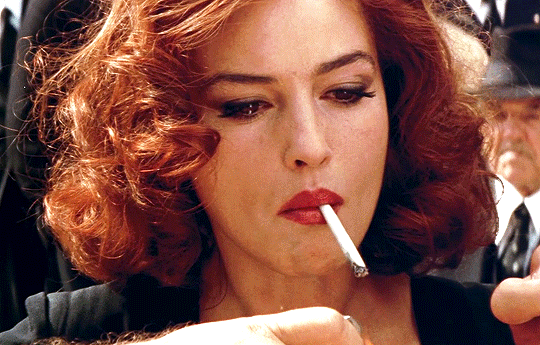




#chevy chase#marcello mastroianni#sigourney weaver#catherine deneuve#mylène demongeot#monica bellucci#marion cotillard#gwyneth paltrow#catherine zeta jones#libra vibes#from one libra to other libras
7 notes
·
View notes
Text
Your Femme Fatale Persona Based On Moon Sign...

Just for fun, astro observations. Enjoy! This is based on the manifestation of... "they made me do it". So, while I dont agree this is the Femme Fatal "homeostasis" of each moon sign, I believe that, at one's darkest hour, these are the specific persona's each of us would take on...
Aries Moon -
Lara Croft (Tomb Raider): Strong, independent, and fearless, the Aries Moon femme fatale is a daring adventurer who isn't afraid to take risks. Like Lara Croft, she's always ready for action and thrives on challenges.
Additionally...

The Bride (Kill Bill): Driven, vengeful, and skilled in martial arts.
Aeon Flux (Aeon Flux): Athletic, daring, and rebellious.
Taurus Moon -
Satine (Moulin Rouge!): Sensual, alluring, and grounded, the Taurus Moon femme fatale is a master of seduction. Like Satine, she knows how to use her beauty and charm to get what she wants while remaining emotionally steadfast.
Additionally...
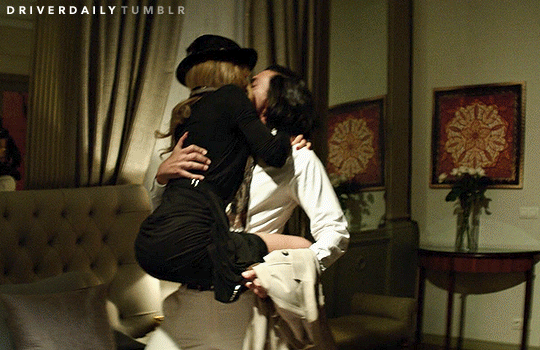

Sugar Kane Kowalczyk (Some Like It Hot): Sexy, charming, and pleasure-seeking.
Regina George (Mean Girls): Popular, manipulative, and materialistic.
Gemini Moon -
Catwoman (Batman Returns): Clever, adaptable, and enigmatic, the Gemini Moon femme fatale is a master of disguise. Like Catwoman, she's quick-witted, elusive, and always keeps others guessing.
Additionally...


Jordan Baker (The Great Gatsby): Clever, charming, and unpredictable.
Marion Crane (Psycho): Secretive, impulsive, and multifaceted.
Cancer Moon -
Norma Desmond (Sunset Boulevard): Emotionally intense, nostalgic, and manipulative, the Cancer Moon femme fatale is a complex character. Like Norma Desmond, she may cling to the past and use her vulnerability to control others.
Additionally...

Annie Wilkes (Misery): Obsessive, nurturing, and unstable.
Alex Forrest (Fatal Attraction): Clingy, possessive, and emotionally demanding.
Leo Moon -
Foxxy Cleopatra (Austin Powers in Goldmember): Confident, dramatic, and alluring, the Leo Moon femme fatale knows how to command attention. Like Foxxy Cleopatra, she's bold, charismatic, and always steals the spotlight.
Additionally...

Marilyn Monroe (The Seven Year Itch): Charismatic, flirtatious, and attention-seeking.
Jessica Rabbit (Who Framed Roger Rabbit): Seductive, enigmatic, and theatrical.
Virgo Moon -
Catherine Tramell (Basic Instinct): Intelligent, calculating, and mysterious, the Virgo Moon femme fatale is a master of manipulation. Like Catherine Tramell, she uses her intellect and attention to detail to outmaneuver others.
Additionally...

Tracy Lord (The Philadelphia Story): Perfectionist, analytical, and critical.
Amy Dunne (Gone Girl): Cunning, organized, and vengeful.
Libra Moon -
Gilda (Gilda): Charming, sophisticated, and flirtatious, the Libra Moon femme fatale is a social butterfly. Like Gilda, she knows how to use her charm and beauty to captivate and influence others.
Additionally...


Madeleine Elster (Vertigo): Elegant, charming, and mysterious.
Daisy Buchanan (The Great Gatsby): Charming, indecisive, and idealistic.
Vesper Lynd (Casino Royale): Sophisticated, diplomatic, and elusive.
Scorpio Moon -
Phyllis Dietrichson (Double Indemnity): Intense, secretive, and seductive, the Scorpio Moon femme fatale is a master of psychological manipulation. Like Phyllis Dietrichson, she uses her sexual allure and emotional depth to ensnare others.
Additionally...
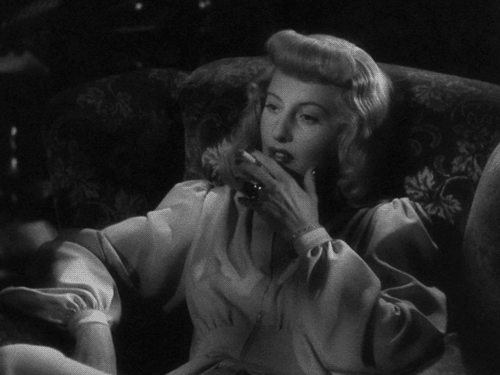
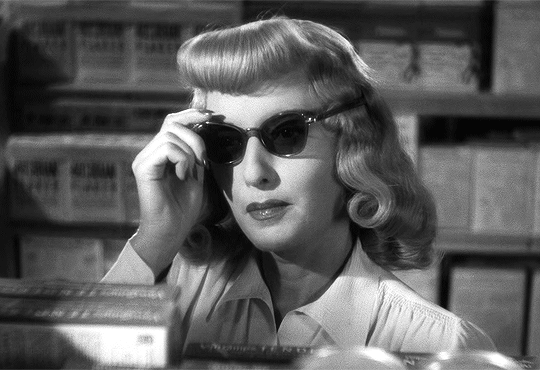
Cersei Lannister (Game of Thrones): Power-hungry, manipulative, and intense.
Brigid O'Shaughnessy (The Maltese Falcon): Mysterious, alluring, and deceitful.
Sagittarius Moon -
Beatrix Kiddo (Kill Bill): Independent, adventurous, and philosophical, the Sagittarius Moon femme fatale is a free spirit. Like Beatrix Kiddo, she's a skilled warrior who follows her own moral code and seeks justice on her own terms.
Additionally...

Nikita (La Femme Nikita): Rebellious, independent, and adventurous.
Lisbeth Salander (The Girl with the Dragon Tattoo): Unconventional, daring, and justice-seeking.
Capricorn Moon -
Miranda Priestly (The Devil Wears Prada): Ambitious, disciplined, and powerful, the Capricorn Moon femme fatale is a formidable presence. Like Miranda Priestly, she's a master of her craft and expects nothing less than perfection from herself and others.
Additionally...

Evelyn Mulwray (Chinatown): Reserved, ambitious, and secretive.
Lady Macbeth (Macbeth): Ambitious, manipulative, and ruthless.
Aquarius Moon -
Mia Wallace (Pulp Fiction): Unconventional, independent, and mysterious, the Aquarius Moon femme fatale is a true original. Like Mia Wallace, she marches to the beat of her own drum and isn't afraid to break the rules.
Additionally...


Mathilda (Léon: The Professional): Unconventional, intelligent, and rebellious.
Clementine Kruczynski (Eternal Sunshine of the Spotless Mind): Eccentric, free-spirited, and unpredictable.
Pisces Moon -
Nina Sayers (Black Swan): Imaginative, emotionally vulnerable, and self sacrificing. Like Nina, she uses her damseled distress and emotional depth to draw others into her web of desire and deceit.
Additionally...
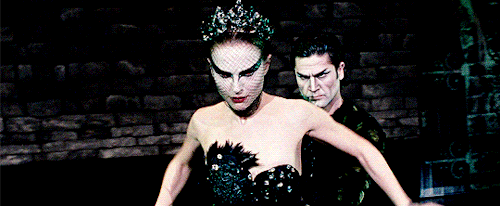

Melissa Robinson (The Last Seduction): Deceptive, adaptable, and seductive.
Laura Hunt (Laura): Elusive, enigmatic, dreamy, and idealization.


#astrology#zodiac#natal chart#sagittarius#astro notes#libra#capricorn#astro observations#virgo#synastry#femme fatale#femme#gemini#pisces#aquarius#taurus#aries#cancer moon#astrology observations#scorpio moon#astro community#scorpio
930 notes
·
View notes
Text
Almayer's Folly (2011)
Almayer's Folly by #ChantalAkerman, "If only the film was as commanding as it is stunning in its pictorial magnificence",
CHANTAL AKERMAN
Bil’s rating (out of 5): BB.5
Original Title: La folie Almayer
Belgium/France, 2011. Centre du Cinéma et de l’Audiovisuel de la Fédération Wallonie-Bruxelles, Artemis Productions, Belgacom, Canal+, Centre National du Cinema et de L’Image Animee, Cine+, Liaison Cinématographique, Paradise Film, Radio Television Belge Francophone, Tax Shelter Film Funding, Tax Shelter du…
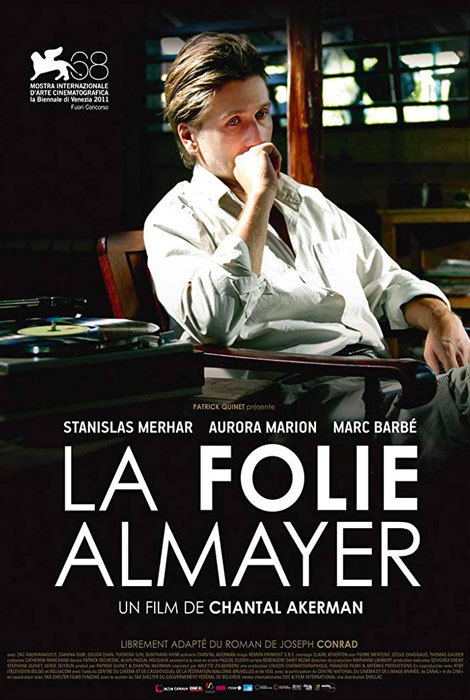
View On WordPress
#Alain-Pascal Housiaux#Artemis Productions#Aurora Marion#Belgacom#Belgium#Bunthang Khim#Canal+#Catherine Marchand#Centre du Cinéma et de l&039;Audiovisuel de la Fédération Wallonie-Bruxelles#Centre National du Cinema et de L&039;Image Animee#Chantal Akerman#Cine+#Claire Atherton#France#Henry Bean#Joseph Conrad#Liaison Cinématographique#Marc Barbé#Nicole Brenez#Paradise Film#Patrick Dechesne#Patrick Quinet#Radio Television Belge Francophone#Rémon Fromont#Sakhna Oum#Solida Chan#Stanislas Merhar#Tax Shelter du Gouvernement Fédéral Belge#Tax Shelter Film Funding#TIFF 2011
0 notes
Text
This is why we still need Women’s History Month.
By Martha Gill
What was life like for women in medieval times? “Awful” is the vague if definite answer that tends to spring to mind – but this is an assumption, and authors have been tackling it with new vigour.
The Once and Future Sex: Going Medieval on Women’s Roles in Society by Eleanor Janega, and The Wife of Bath: A Biography by Marion Turner both contend that women were not only bawdier but busier than we thought: they were brewers, blacksmiths, court poets, teachers, merchants, and master craftsmen, and they owned land too. A woman’s dowry, Janega writes, was often accompanied with firm instructions that property stay with her, regardless of what her husband wanted.
This feels like a new discovery. It isn’t, of course. Chaucer depicted many such cheerfully domineering women. The vellum letter-books of the City of London, in which the doings of the capital from 1275 to 1509 were scribbled, detail female barbers, apothecaries, armourers, shipwrights and tailors as a matter of course. While it is true that aristocratic women were considered drastically inferior to their male equivalents – traded as property and kept as ornaments – women of the lower orders lived, relatively, in a sort of rough and ready empowerment.
It was the Renaissance that vastly rolled back the rights of women. As economic power shifted, the emerging middle classes began aping their betters. They confined their women to the home, putting them at the financial mercy of men. Female religious power also dwindled. In the 13th century seeing visions and hearing voices might get a woman sainted; a hundred years later she’d more likely be burned at the stake.
“When it comes to the history of gender relations, storytellers portray women as more oppressed than they actually were”
Why does this feel like new information? Much of what we think we know about medieval times was invented by the Victorians, who had an artistic obsession with the period, and through poetry and endless retellings of the myth of King Arthur managed somehow to permanently infuse their own sexual politics into it. (Victorian women were in many respects more socially repressed than their 12th-century forebears.)
But modern storytellers are also guilty of sexist revisionism. We endlessly retread the lives of oppressed noblewomen, and ignore their secretly empowered lower-order sisters. Where poorer women are mentioned, glancingly, they are pitied as prostitutes or rape victims. Even writers who seem desperate for a “feminist take” on the period tend to ignore the angle staring them right in the face. In her 2022 cinematic romp, Catherine called Birdy, for example, Lena Dunham puts Sylvia Pankhurst-esque speeches into the mouth of her 13th-century protagonist, while portraying her impending marriage – at 14 – as normal for the period. (In fact the average 13th-century woman got married somewhere between the ages of 22 and 25.)
But we cling tight to these ideas. It is often those who push back against them who get accused of “historical revisionism”. This applies particularly to the fantasy genre, which aside from the odd preternaturally “feisty” female character, tends to portray the period as, well, a misogynistic fantasy. The Game of Thrones author George RR Martin once defended the TV series’ burlesque maltreatment of women on the grounds of realism. “I wanted my books to be strongly grounded in history and to show what medieval society was like.” Oddly enough, this didn’t apply to female body hair (or the dragons).
This is interesting. Most of our historical biases tend to run in the other direction: we assume the past was like the present. But when it comes to the history of gender relations, the opposite is true: storytellers insist on portraying women as more oppressed than they actually were.
“The history of gender relations might be more accurately painted as a tug of war between the sexes”
The casual reader of history is left with the dim impression that between the Palaeolithic era and the 19th century women suffered a sort of dark age of oppression. This is assumed to have ended some time around the invention of the lightbulb, when the idea of “gender equality” sprang into our heads and right-thinking societies set about “discovering” female competencies: women – astonishingly – could do
things men could do!
In fact the history of gender relations might be more accurately painted as a tug of war between the sexes, with women sometimes gaining and sometimes losing power – and the stronger sex opportunistically seizing control whenever it had the means.
In Minoan Crete, for example, women had similar rights and freedoms to men, taking equal part in hunting, competitions, and celebrations.
But that era ushered in one of the most patriarchal societies the planet has ever known – classical Greece, where women had no political rights and were considered “minors”.
Or take hunter-gatherer societies, the source of endless cod-evolutionary theories about female inferiority. The discovery of female skeletons with hunting paraphernalia has disproved the idea that men only hunted and women only gathered – and more recently anthropologists have challenged the idea that men had higher status too: women, studies contend, had equal sway over group decisions.
This general bias has had two unfortunate consequences. One is to impress upon us the idea that inequality is “natural”. The other is to give us a certain complacency about our own age: that feminist progress is an inevitable consequence of passing time. “She was ahead of her time,” we say, when a woman seems unusually empowered. Not necessarily.
Two years ago, remember, sprang up one of the most vicious patriarchies in history – women were removed from their schools and places of work and battoned into homes and hijabs. And last year in the US many women lost one of their fundamental rights: abortion. (Turns out it was pro-lifers, not feminists, who were ahead of their time there.)
Both these events were greeted with shock from liberal quarters: how could women’s rights be going backwards? But that only shows we should brush up on our history. Another look at medieval women is as good a place to start as any.
Martha Gill is a political journalist and former lobby correspondent
#Women’s History#books for women#The Once and Future Sex: Going Medieval on Women’s Roles in Society#Eleanor Janega#The Wife of Bath: A Biography#Marion Turner
709 notes
·
View notes
Text
G’eth Character Name Bank
First Names
Masculine Names
Alfred, Andrew, Arlo, Arthur, Balthazar, Barry, Ben, Benedick, Bernard, Burchard, Cedric, Charibert, Crispin, Cyrill, Daegal, Derek, Digory, Drustan, Duncan, Edmund, Edwin, Elric, Evaine, Frederick, Geffery, George, Godfreed, Gregory, Guy, Harris, Harry, Horsa, Hugh, Humphrey, Iago, Jack, Jeremy, John, Kazamir, Kenric, Lawrence, Leoric, Lorik, Luke, Lynton, Lysander, Madoc, Magnus, Maukolum, Micheal, Miles, Milhouse, Mordred, Mosseus, Ori, Orvyn, Neville, Norbert, Nycolas, Paul, Percival, Randulf, Richard, Robert, Roderick, Stephen, Tennys, Theodoric, Thomas, Tristan, Tybalt, Victor, Vincent, Vortimer, Willcock, Willian, Wymond
Feminine Names
Adelin, Alice, Amelia, Beatrix, Beryl, Bogdana, Branwyne, Brigida, Catalina, Catherine, Claudia, Crystina, Deanna, Desdemona, Elaine, Elinora, Eliza, Enide, Eva, Ferelith, Fiora, Freya, Gertrude, Gregoria, Gueanor, Gwen, Gwendolyn, Hannah, Hegelina, Helen, Helga, Heloise, Henrietta, Igraine, Imogen, Jacquelyn, Jane, Jean, Jenny, Jill, Juliana, Juliet, Katie, Leela, Lettice, Lilibet, Lilith, Lucy, Luthera, Luz, Lyra, Malyna, Margherita, Marion, Meryl, Millie, Miranda, Molle, Morgana, Morgause, Nezetta, Nina, Novella, Olwen, Oriana, Oriolda, Osanna, Pamela, Petra, Philippa, Revna, Rohez, Rosalind, Rose, Sallie, Sarra, Serphina, Sif, Simona, Sophie, Thomasine, Tiffany, Ursula, Viola, Winifred, Yrsa, Ysabella, Yvaine, Zelda, Zillah
Gender-Neutral/Unisex Names
Adrian, Alex, Aiden, Arden, Ariel, Auden, Avery, Bailey, Blaire, Blake, Brett, Breslin, Caelan, Cadain, Cameron, Charlie, Dagon, Dana, Darby, Darra, Devon, Drew, Dylan, Evan, Felize, Fenix, Fernley, Finley, Glenn, Gavyn, Haskell, Hayden, Hunter, Jace, Jaime, Jesse, Jo, Kai, Kane, Karter, Kieran, Kylin, Landon, Leslie, Mallory, Marin, Meritt, Morgan, Nell, Noel, Oakley, Otzar, Paris, Peregrine, Quant, Quyn, Reagan, Remy, Robin, Rowan, Ryan, Sam, Samar, Sasha, Sloan, Stace, Tatum, Teegan, Terrin, Urbain, Vahn, Valo, Vick, Wallace, Waverly, Whitney, Yardley, Yarden, Zasha
Surnames
Surnames, Patrilineal - First Name (Patrilineal Surname)
Ace, Allaire, Appel, Arrow, Baker, Bamford, Barnard, Beckett, Berryann, Blakewood, Blanning, Bigge, Binns, Bisby, Brewer, Brickenden, Brooker, Browne, Buller, Carey, Carpenter, Carter, Cheeseman, Clarke, Cooper, Ead, Elwood, Emory, Farmer, Fish, Fisher, Fitzroy, Fletcher, Foreman, Foster, Fuller, Galahad, Gerard, Graves, Grover, Harlow, Hawkins, Hayward, Hill, Holley, Holt, Hunter, Jester, Kerr, Kirk, Leigh, MacGuffin, Maddock, Mason, Maynard, Mercer, Miller, Nash, Paige, Payne, Pernelle, Raleigh, Ryder, Scroggs, Seller, Shepard, Shore, Slater, Smith, Tanner, Taylor, Thatcher, Thorn, Tilly, Turner, Underwood, Vaughan, Walter, Webb, Wilde, Wood, Wren, Wyatt, Wynne
Surnames, Townships in G’eth - First Name of (Location)
Abelforth, Argent Keep, Barrow Springs, Barrowmere, Bedford, Brunhelm, Bumble, Casterfalls, Dunbridge, Falmore Forest, Folk’s Bounty, Frostmaid, Fulstad, Heller’s Crossing, Hertfordshire, Humberdale, Inkwater, Little Avery, Marrowton, Mistfall, Mistmire, Morcow, Necropolis-on-Sea, Otherway, Parsendale, Piddlehinton, Port Fairwind, Redcastle, Ransom, Rutherglen, Saint Crois, Tanner’s Folly, Tavern’s Point, Wilmington
Surnames, Geographical Locations in G’eth - First Name of the (Location)
Cove of Calamity, Deep Woods of Falmore, Eastern Isles, Eastern Mountains, Foothills, Frozen Peak, Lakes, Maegor Cobblestones, Northern Mountains, Southern Isle, Tangle, West Coast, Wild Wild Woods, Woods of Angarad
Surnames, Nickname - First Name the (Something)
Bald, Bastard, Bear, Bearded, Big, Bird, Bold, Brave, Broken, Butcher, Bruiser, Careless, Caring, Charitable, Clever, Clumsy, Cold, Confessor, Coward, Crow, Cyclops, Devious, Devoted, Dog, Dragonheart, Dreamer, Elder, Faithful, Fearless, Fey, Fool, Friend, Generous, Giant, Goldheart, Goldfang, Gouty, Gracious, Great, Hag, Handsome, Hawk, Honest, Huge, Humble, Hungry, Hunter, Innocent, Ironfist, Ironside, Keeper, Kind, Lesser, Liar, Lionheart, Little, Loyal, Magical, Mercenary, Merchant, Messenger, Old, Orphan, Pale, Polite, Poet, Poor, Prodigy, Prophet, Proud, Reliable, Romantic, Rude, Selfish, Sellsword, Scab, Scholar, Shield, Shy, Singer, Sirrah, Slayer, Slug, Small, Stoneheart, Swift, Tadde, Talented, Tart, Tenacious, Timid, Tiny, Tough, Traveller, Trusted, Truthful, Viper, Wizard, Wolf, Wyrm
107 notes
·
View notes
Text
Coeli's Picks: Monochrome, part 2 (Gloria Swanson Edition)
One Dress a Day Challenge
Coeli wrote: "And now for a whole lot of Gloria Swanson, because she might have had the best film wardrobe ever."
In chronological order. (This list includes a couple of reposted images, but @coeli1000 suggested them in the first place.)
Male and Female (1919) / As Lady Mary Lazenby
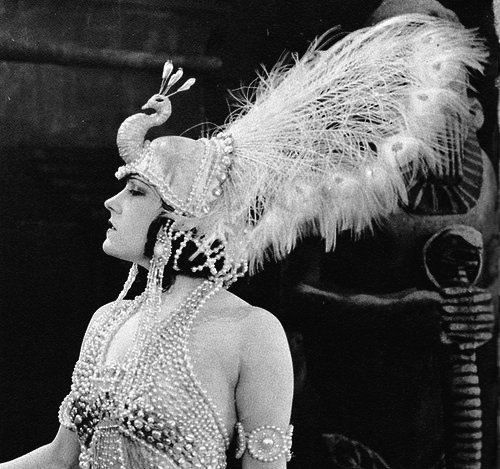
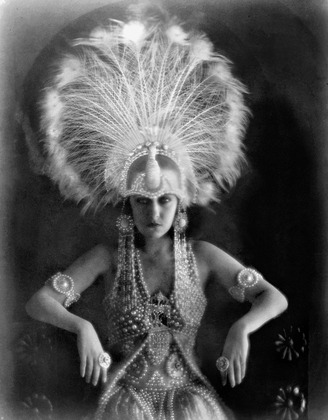

My American Wife (1922) / As Natalie Chester

The Impossible Mrs. Bellew (1922) / As Betty Bellew
(See previous post here.)

Zaza (1923) / As Zaza
"Dig those painted stockings!" (See previous post here.)

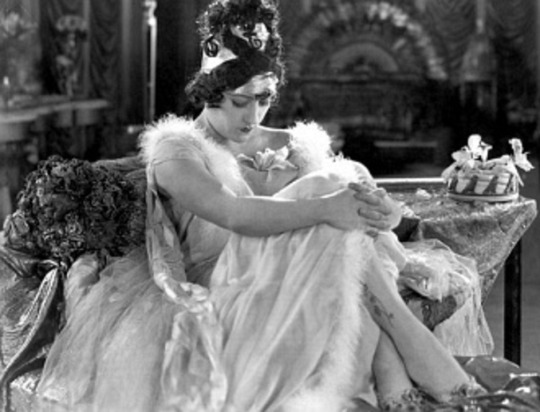
Madame Sans-Gêne (1925) / As Catherine Hübscher
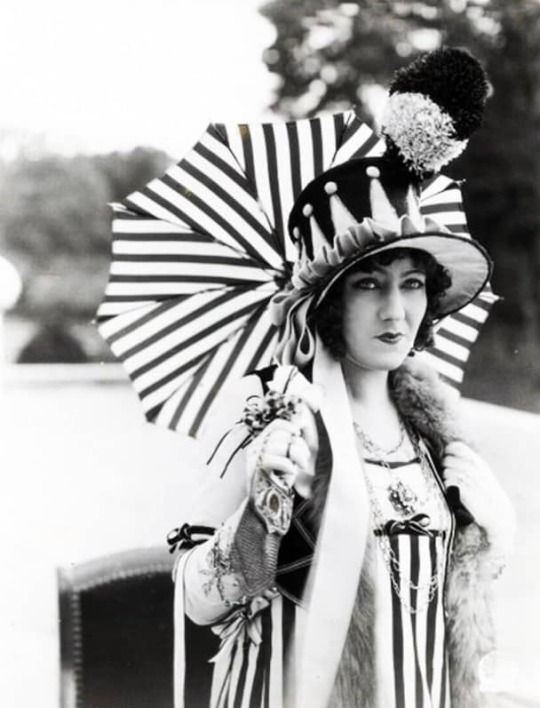

The Trespasser (1929) / As Marion Donnell
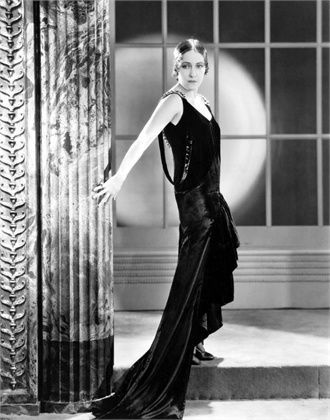
Indiscreet (1931) / As Geraldine "Jerry" Trent
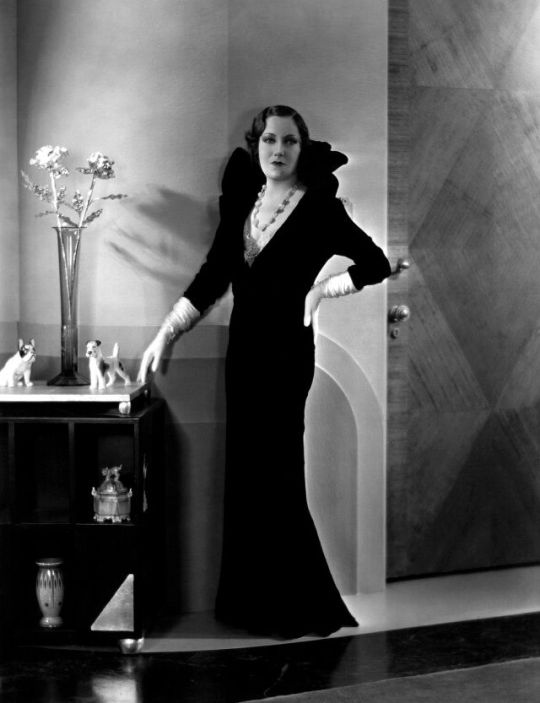
Music in the Air (1934) / As Frieda Hotzfelt

#anything goes december#gloria swanson#one dress a day challenge#one dress a week challenge#movie costumes#the impossible mrs bellew#male and female#my american wife#zaza 1923#madame sans gene#the trespasser#indiscreet#music in the air#silent movies#pre code#1920s fashion#1930s fashion#old hollywood#black and white movies#20th century costumes
18 notes
·
View notes
Text
The fantasy in modern Arthuriana (2)
This is a loose translation of Claire Jardillier’s article “Les enfants de Merlin: le merveilleux médiéval revisité” (The children of Merlin: Medieval magic revisited), for Anne Besson’s study-compilation.

II/ Wizards and witches
The fantastical elements within modern rewrites are often embodied in the most visible way by a few key characters. First and foremost among this magical cast is, of course, Merlin the enchanter, but also regularly the bard Taliesin, despite his lesser presence within the Matter of Britain. Taliesin indeed only appears obviously tied to Arthur within the Welsh sources, especially “Preiddu Annwn”, where he is part of the expedition led by Arthur to steal away the cauldron of resurrection from the Otherworld. We can make the hypothesis that is it because of the historical rewrites of the Arthurian legends that the character of Taliesin gained such an importance, since it is in the Welsh sources that he is most frequently seen, sources that modern rewriters especially love due to judging them more ancient and thus more “authentic” and more Celtic than the chivalry romances and knighthood romans of France and England. Since Wales resisted more strongly to the Saxon invader, then to the Normand influence, modern novelists like to use the “Mabinogion” and the Welsh poems to historicize their Arthur. Taliesin usually stays within his traditional role of bard, in accord to the historical and bibliographical information we have about him. While quite brief, these information naturally designate him as the symbol of the Arthurian legend within a “realistic” rewriting, as a character between the history and the myth.
[In the “Hanes Taliesin” mainly, translated by Lady Charlotte Guest and which follows her “Mabinogion” translations, we discover the two births of Gwyon Bach/Taliesin, is exploits as a bard within the court of prince Elphin, and some of his poems. The historical Taliesin seems to have been a bard at the court of Urien Rheged during the 6th century, and the poems attributed to him were preserved within the “Llyfr Taliesin” (The Book of Taliesin). It notably contains the famous “Cat Godeu” (Battle of the Trees) and the previously mentioned “Preiddu Annwn”. These Welsh poems, like many others, were translated and published by William F. Skene within his “Four Ancient Books of Wales”]

As such, within Fay Sampson’s “Daughter of Tintagel” cycle he becomes one of the five narrators that relate the life of Morgan. A first-person narration that give a voice to a secondary character of the medieval corpus is a fundamental trait of modern Arthurian literature : as such, we can hear Kai, Pelleas, Bohort, Rhys or Bedwyr, characters whose point of view is rarely given in legends, alongside the manifestation of more novel characters, such as Derfel, a shadowy warrior turned saint in the 6th century who narrates Bernard Cornwell’s “Warlord Chronicles”. [Respectively, Kai is heard within Phyllis Ann Karr’s The Idylls of the Queen and John Gloag’s Artorius Rex ; Pelleas within Stephen R. Lawhead’s Arthur and Courtway Jones’ In the Shadow of the Oak King ; Bohort within Dorothy Jane Roberts’ Launcelot my Brother ; Rhys within Gillian Bradshaw’s Kingdom of Summer ; Bedwyr within Catherine Christian’s The Sword and the Flame and Stephen R. Lawhead’s Arthur.]
Within Stephen Lawhead’s works, the role of Taliesin is more developed since he becomes the father, and so the precursor of Merlin (within Marion Zimmer Bradley’s, he is Merlin’s first incarnation). In his trilogy, the bard Talesin paves the way for Merlin, who will surpass his father in his role as the companion of the major hero, Arthur king of Britain. It is precisely this dimension that is often used by modern Arthurianists. [Stephen R. Lawhead wrote in reality five novels, the last two being a flash-back to episodes from between book 2 and 3. This Arthurian cycle is especially concerned with the questions of filiation, legitimacy and predestination. As such, Taliesin announces and foreshadow the coming of his son, a sort of messiah for the Britons, but Merlin himself works for the coming of Arthur, the savior of Britain as much on a spiritual level (the writings of Lawhead are distinctly Christian in tone) as on a political level. It is probably why we also see here a weird and exceptional element introduced, as Arthur is made the posthumous son of Aurelius, and not the bastard of Uther. Here Arthur is the product of an union blessed by the Church, and as such he descends from the first High-King, not from his replacement out of a “side-branch” of the family.]
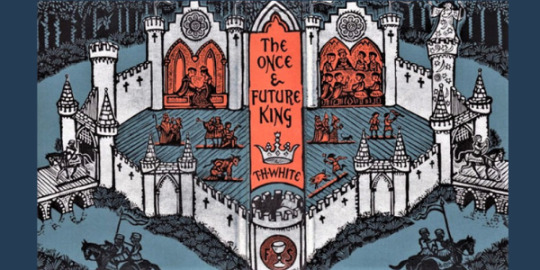
We also have to note that modern rewrites love to tell what happened during the life of characters in the form of prequels – in this case, the youth of Merlin, which is rarely detailed in the Middle-Ages outside of his birth and his encounter with Vortigern. It was the case within Mary Stewart, the first author who was concerned with the wizard’s youth, and who sems to have deeply marked modern Arthurianists, since the same pattern can be found in other novels, including those of Stephen Lawhead. This concern with “what happened before” is not exclusively Arthurian, and can be seen within other contemporary sagas – Star Wars, Indiana Jones, Blueberry… It is a tradition as old as the various “Childhoods” texts of the Middle-Ages. [Mary Stewart wrote “The Crystal Cave”, “The Hollow Hills” and “The Last Enchantment”. As a proof of the intertextuality of Arthurian novels, “the last enchantment” is an expression reused and exploited by Bernard Cornwell in the last part of his trilogy, where a dying Merlin, entirely devoured by his own student Nimue, preserves a “last enchantment” to allow Arthur and a few others to escape the battle of Camlan]
Be it Taliesin or Merlin, the first way the question of the magic implants itself within the narrative device is about the relationship between the king and his wizard. The magical element is thus tied to the political power, weighed down by a reality which, if not historical, is at least coherent. This heirloom is directly tied to the medieval sources, even if it is not obvious at first. The idea of an Arthur raised as a boy by Merlin owes much more to T.H. White’s “The Once and Future King” than to the medieval texts, where only a slow and complex evolution allowed the association of those two characters now seen as undividable. [White’s work is a set of five novels, first published separately, then compiled as one work in the 50s, and to which the last novel, The Book of Merlin, was added in 1977. This work is a precursor of all the rewrites that happened from the 60s onward, especially the first book that tells of Arthur’s childhood and his education by Merlin. It was a best-seller, and the adaptation of this first novel into an animated movie by Disney (63’s The Sword in the Stone) amplified its impact]. Indeed, within Geoffroy of Monmouth, Merlin and Arthur follow each other in the text… but never meet. It was within later rewrites, Wave, Lawamon, and in the French “Lancelot-Graal”, that the king and the enchanter will develop a more intimate relationship, culminating within Malory’s Morte Darthur. [In Geoffroy’s tale, the two characters at least never meet within the context of the tale. A doubt is allowed since in most of the manuscripts, Merlin makes a brief apparition at the very end of the “Historia”, where an “angelic voice” talks to Cadwallader, telling him that “God wishes that the Britons stop ruling within Britain until the moment that Merlin prophesized to Arthur” ; this sentence implies that Merlin might have been the king’s prophet, a role that will become more and more obvious in later rewrites]
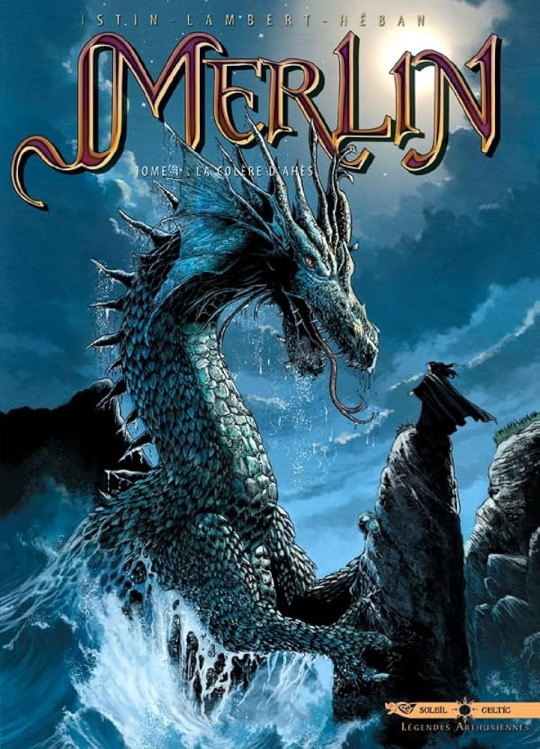
This is due to the two characters, Merlin and Arthur, originally belonging to two distinct traditions. Once they became connected thanks to Geoffroy’s Historia Regum Britaniae, the two characters got closer and closer, and gained many interactions, just as Merlin’s interventions became more and more fantastical. This is very clear when we look at an episode shared by all the medieval Merlinian tales: the moving of the stones of Ireland to create Stonehenge. Within Geoffroy’s, it is a mechanical process. Within Wace, an unexplained way. Finally, within Lawamon, it becomes a powerful spell that makes the stone “as light as feathers”. Modern authors follow this tradition and often reuse this episode, or a similar one, in what we can call “the motif of the dancing stones”. In the same way, within Lawhead’s novel, a child Merlin proves his powers to an assembly of druids by making the stones of a cromlech levitate. Stonehenge plays an important role for Cornwell: it becomes the place of a ghost-filled ceremony during which Merlin gives Excalibur to Arthur. Even among comic books, Merlin makes stones dance before amazed mortals. [It is within the first volume of the BD series “Merlin” by Jean-Luc Istin and Eric Lambert, “La colère d’Ahès” (The Wrath of Ahès). The dancing stones of Istin and Lambert are quite similar to the ones described by Lawhead, and the scenarist confessed having read the “Pendragon Cycle”. We find in this “Merlin” the same habt of syncretizing religions as within Lawhead’s works (father Blaise is a former druid, and offers Merlin as a symbol of the union of religions).]
We find back here what we said before: the historicized Arthurian literature of the 60s-80s greatly deprived the medieval text of their fantasy, and since the 80s-90s we have a slow re-appropriation of the medieval magic within novels that still, however, wish to be historical. In other terms – the stones are dancing again, but they are always dancing in a mentioned 6th century.
Before Lawamon, Merlin only acted during the lifetime of Aurelius and Uther, before disappearing for no reason after Arthur’s birth. However, the encounter between those two historical characters was too tempting to be avoided, and we can see a true shift between Geoffroy and Malory (for example), which today leads to the many tales in which Merlin acts as the teacher, tutor, or even adoptive father of Arthur. This filiation is helped by two elements. On one side, that is an elliptic moment covering Arthur’s childhood in medieval texts, and we go from him as a baby to him as a young fifteen-year old king. [We find within Lawamon the beginning of an explication: child-Arthur was raised by elves at Avalon. This idea was reused by Parke Godwin within the novel “Firelord”.] On the other hand, we can see that all of his next of kin die around the same time. In front of this absence of parents, it is very tempting to remove Ector (the father of Kay and the tutor of the royal child in the tradition) and put in his place a more familiar and impressive character, Merlin the wizard.
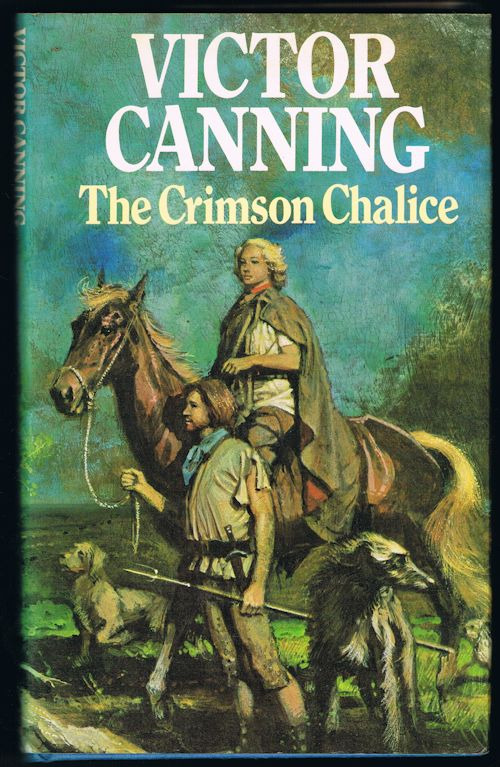
We talked before of the habit of “prequels”: the cyclical temptation of modern novels, which in a way mimics the Arthurian medieval tradition of a condensed and fractioned writing of the whole Arthurian legend (usually in three volumes), favorizes the writing of the origins, of the “before Arthur”. The introduction of Merlin, but also of Taliesin, proves this attraction for what Anne Besson calls an “Arthurian prehistory”. For Stephen Lawhead, the link between the various generations (Taliesin, father of Merlin, Merlin spiritual father of Arthur) insists upon the greatness and the predestination of the king of the Britons, the bearer of Light. Even when the Arthurian tale is limited to a single novel, it is not unusual to see it begin with the generation before Arthur: it was the case with Victor Canning’s “The Crimson Chalice”, where a third of the novel follows the events that led to Arthur’s birth (even though here Arthur’s parents are named Tia and Baradoc, and bear no resemblance to Igraine or Uther).
To all the reasons described above, we must add the fictional temptation of having characters coexisting to allow a powerful confrontation. But this temptation also bears a prevalent trait of the modern Arthurian fiction, and of its dialogue with the sources. Indeed, it is not uncommon to see a rearrangement, to various degrees, of the links that traditionally unite the characters. As such, in most sources Ygerne is the wife of Gorlois and the mother of Arthur, but she can be his half-sister and the mother of Medraud within Rosemary Sutcliff’s “Sword at Sunset”. The same Ygerne becomes Gorlois’ daughter, not his wife, in Stephen Lawhead’s work, as the author plays with the writing of the myth, has his Merlin-narrator laugh about the mad rumors that circulated about the siege of Tintagel “I have even heard it said that Ygerna was Gorlas’ wife – Imagine that!”). The marvelous does not escape this kind of more-or-less extreme shifts: the case of the female characters, of their relationship to magic, and of their role within history is especially revealing.
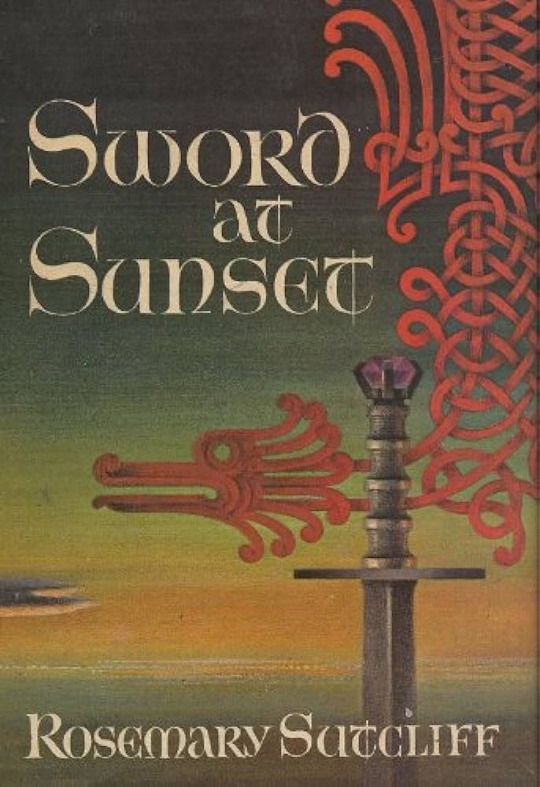
#arthuriana#fantasy#arthurian novel#fantasy novel#arthurian literature#translation#merlin#king arthur#taliesin#magic#arthurian rewrites#merlin the enchanter
10 notes
·
View notes
Text



Meanwhile, in the side households, I missed quite a few updates...
Landry and Géralda had twin daughters in 1314, Marion (top picture) and Alix. Marion was stillborn.
Jean and Flore had a daughter in 1313, Ermessinde, who is alive and well, and a daughter in 1314, Isabeau (bottom picture), who passed away soon after being born.
I might as well mention it here even though it's not a side household; in 1313 Catherine had a daughter too, named Condors (who automatically lives since I don't roll for NPC's).
I really wish these guys made me more sons though... Also, Landry has had 10 children at this point, and only five are still alive. The rolls are kind to Denyse, but they are awful to Landry.
#ultimate decades#ultimate decades challenge#decades challenge#UDC#1300s#Marion Lechesne#Alix Lechesne#Ermessinde Lechesne#Isabeau Lechesne#Condors Leblanc
8 notes
·
View notes
Text
List of characters that appear in my Thomas and Friends AU
Main:
Thomas
Edward
Henry
Gordon
James
Percy
Toby
Emily
Molly
Rosie
Stanley
and Rebecca
Secondary/Supporting:
Duck
Donald and Douglas
Oliver
Wilbert
BoCo
Philip
Bill and Ben
Derek
Timothy
Marion
Salty
Porter
Daisy
Ryan
Brent the Ballast Spreader
Mavis
Sidney
Arry and Bert
Diesel
Den
Dart
Diesel 10
Billy
Norman
Arthur
Harvey
Bear
Stafford
Fergus
Charlie
Dennis
Murdoch
Flora
Belle
Flynn
Whiff
Scruff
Neil
Neville
Hank
Sonny
Paxton
Ferdinand
Bash and Dash
Glynn
Stephen
Dustin
Winston
Skarloey
Rheneas
Sir Handel
Peter Sam
Rusty
Duncan
Duke
Bertram
Smudger
Freddie
Mighty Mac
Luke
Millie
Victor
Culdee
Wilfred
Harry (Formerly known as Lord Harry and later as Patrick)
Alaric
Godred
Mike
Rex
Bert
Flying Scotsman
Spencer
Stepney
Connor
Caitlin
Samson
Merlin
Lexi
Theo
Hurricane
Frankie
D261
Splodge (Splatter and Dodge)
Jinty and Pug
Patriot the Big City Engine
Mallard
Green Arrow
Thirteen
Hiro
Gator
Ashima
Rajiv
Yong Bao
Shane
Vinnie
Sam
Axel
Gina
Raul
Etienne
Frieda
Hugo
Ivan
Carlos
Lady
Proteus
Annie and Clarabel
Henrietta
Toad
Old Slow Coach
Bruno
Rocky
Judy and Jerome
Hector
SCruffey
Fred Pelham
The Slip Coaches
Bradford
Catherine
Bertie
Bulgy
Terence
Trevor
Caroline
Elizabeth
George
Butch
The Horrid Lorries
Kevin
Madge
Thumper
Jack
Alfie
Oliver
Ned
Max and Monty
Isobella
Kelly
Byron
Buster
Bulstrode
Skiff
Captain
Harold
Jeremy
Cranky
Carly
Big Mickey
Reg
Owen
Merrick
And Beresford
Coming Soon:
Logan
Ulli
Duchess of Hamilton
Flying Thistle
D199
Albert
Kenji (Maybe)
Ivo Hugh
Ada, Mabel, Jane, and Cora
City of Turo
2007 Prince of Wales
W1
Old King Coal
Elsie
Hannah (Henrietta’s Sister)
Helena and Victoria
Frank
So, there you have it
7 notes
·
View notes
Text


JANE BIRKIN CONCERT OH PARDON TU DORMAIS BY FRIENDS
A l’Olympia le 3 février 24
Les bénéfices de ce concert seront reversés aux restos du coeur.
Avec:
Dominique A, Fanny Ardant, Yvan Attal, Carla Bruni, Jarvis Cocker, Marion Cotillard, Etienne Daho, Lou Doillon, Thomas Dutronc, Charlotte Gainsbourg, Beth Gibbons, Arthur H, Keren Ann, Sandrine Kiberlain, M, Abd Al Malik, Mickey 3D, Miossec, Catherine Ringer, Vanessa Paradis, Eddy de Pretto.
Direction musicale et arrangements : Jean-Louis Piérot
Basse: Marcelo Giuliani
Piano et guitare: Jean-Louis Piérot
Guitare: François Poggio
Batterie: Colin Russeil
Photos: Thomas Perrault
7 notes
·
View notes
Text


𝚂𝙷𝙴 𝙱𝙸𝚃 𝙷𝙴𝚁 𝚃𝙷𝚄𝙼𝙱 𝙰𝚃 𝙶𝙾𝙳 𝙰𝙽𝙳 𝙲𝙾𝙽𝚂𝚄𝙼𝙴𝙳 𝙷𝙴𝚁𝚂𝙴𝙻𝙵 𝙸𝙽𝚃𝙾 𝙱𝙴𝙸𝙽𝙶.
… BIRTH NAME … salomé atreides.
… NICKNAMES … none you'll say to their face.
… AGE … assumed forty.
… GENDER … demi woman.
... PRONOUNS ... they & she.
… SEXUALITY … bisexual. kinsey scale 3.
… CIVILIAN OCCUPATION … ceo of anunnaki pharmaceuticals.
… CRIMINAL ALLEGIANCE … the highest bidder.
… NOTABLE ATTRIBUTES … vaguely unidentifiable accent, lightly french. voice claim: marion cotillard as talia al ghul. symptoms of perfection that turn the corner to unnatural: poreless, glowing skin, free of wrinkles; facial symmetry; hair that does not fall flat; a perpetually unnamed, tempting scent. a ringlike scar centered between her breasts.
… CHARACTER INSPIRATIONS … talia al ghul ( dc & the dark knight rises ). catherine tramell ( basic instinct ). lady trieu ( hbo's watchmen ). sévérine ( skyfall ). lady jessica ( dune ). amy dunne ( gone girl ). cersei lannister ( game of thrones ). pamela isley ( dc ). medusa ( greek mythology ). scylla ( greek mythology ).
( + ) ingenious, persuasive, patient, charismatic, intuitive, eloquent, sensual, observant.
( - ) cunning, resentful, possessive, anarchistic, enigmatic, manipulative.
PLEASE BE AWARE THE FOLLOWING BIOGRAPHY CONTAINS TRIGGERING TOPICS.
𝚂𝙿𝙰𝚁𝙺𝙽𝙾𝚃𝙴𝚂.
trigger warnings: murder, poverty, prostitution, age gap, implied sexual assault, trafficking.
your father comes from a flat place: all ice, too hard to dig through. his world, unlike yours, is a wide one, his pain centralized to the fact that it is endless but empty. you learn later that the name for his wound is RED EYE, the name passed off with all the grandeur of a fatal diagnosis. and what is that you, bled for his sins, should care for the pinkness of one single vestige? the ritualistic stripping of the body, the drowning and remaking, is nothing in comparison to the informal breaking of one: your father's pain was in service to a purpose. yours was punishment.
your home has no name. so few places in this world that have escaped cataloging, geographers and mapmakers, and yours is one of them: if it ever bore a title of possession, you cannot say it because your mouth is too occupied with choking. the name of your home is nothing more than a scream. a guttural cry. in the place without name you're born to shaking grounds, your birth tied inexorably to bombs dropping. you, the child of a woman who knows these lands and the man sent to pillage them, do not exist without war. you would not exist without the promise and execution of brutality.
she dies in front of you. that's another way to say they kill her in front of you. that's another way to say they let you cover your siblings' eyes only because yours stay open. for association with the disruptor. they point to the body & tell you its kindness that you do not meet the same fate, that they banish you to the outskirts instead. your eyes, the same colour as your father's — the mark, the evidence — stay blistered open for years. sleep is little and rare, delicate and costly; with mother gone you are the provider and the shelter both, your brothers & sister tucked under your arms. it's called tooth & nail survival because that's all you have left in the end, bared fangs and a single, measly weapon in your pocket. you do what is necessary, thieving food of tables & allowing men to play graverobber with your body. your father, remember, was bled for a purpose. you were skinned for pleasure.
let us revisit: the cry, the guttural scream. the name of your home and the sound of your history. that's what life is, for some time. the throat grows raw at some point, the sound dimming when you meet him. a french diplomat, enamored of your gamine body, the harsh wonder of your electric eyes. he takes you and he keeps you, a mistress shelved in the back of his garden in the red marble house, hidden among the rhododendrons. it is not the happiest part of your life because you are never happy, but it is the most important: money enough earned for the siblings who have survived, and lessons in ascension for yourself. black velvet dresses that sweat in the wet country heat, meals at his cool long table, hair done up in a bow, learning to eat off fine china. a favoured pet, a smothered lover. a novelty to his visiting friends, who marvel at your grace and the bite that follows. you are not happy. but you are learning: your strengths, and their weaknesses.
all that knowledge on how to cross the pit, and still not enough to avoid when it gapes open beneath you. your lover smuggles you across continents under his arm, tucked into the suffocating folds of his jacket. a new life, he says. it's only your last one redressed. he's paid, you're told, a substantial amount for your acquisition: an exotic, gamine creature unlike the others. he has either the grace or the audacity to look embarrassed when you realize what's happened, the moment you recognize you've been sold as the pound of flesh and the bow around it.
a third act, the scream muffled now, lodged in a pocket of the throat where no one can find it. you learned long ago that thrashing against fate does no good, so instead you go still: placid as the doe drinking from a river, they imagine, forgetting what other creatures go undetected at the side of the water. yellow eyes in the dark, thorny scales, rows of teeth. in the organization that holds your leash you become indispensable, a favourite of the gods and the ones they serve.
the loosening of your puppet strings takes years, and you ripen all the while. higher bidders, horrid tastes. medusa didn't grow snakes till she was wronged, and your serpents bellow like twine around eden's first branches. in russia the scissors find you, the colour of your electric eyes lighting the way. the eyes, you've always known, of your father's. a comrade of your father's they say, his own eyes pink with familiarity. red with guilt. the escape takes several more months because you refuse to leave emptyhanded: when you flee, it's with jewels filched from the crown. it's with fangs sunk into the ankle of the one who put you in a basket.
salomé is not your name but it is your story, the daughter baring seven veils and the head of a man in your fist, clenched by the hair. america is soft as yarn, stretched in your hands, turning into the shapes you make it. men similarly unspool like guts for your blade, spilling what you demand in exchange for your touch. the one you will call husband is a conscious mark, as they all are. you've lived too long under the crosshatch of others to live now without aim.
philomene atreides, the ceo of anunnaki pharmaceuticals ⸺ a genius, perhaps, and certainly a fool. others might have called his wings wax when he tried to fix the world, but they only melt in the the attempt to correct you. his product, inserted into your heart. an ownership. another leash. we know what is to be done with leashes.
philomene atreides, the ceo of anunnaki pharmaceuticals ⸺ murdered in his bed. you, they say, spared the same gruesome fate by luck alone. you, with a severed rope in your palm, your neck barren and lovely.
you, after some months spent in mourning, voted unanimously as the new head of the snake. all you've ever had, all you've ever needed: electric eyes, tooth and nail.
SUMMARY: salomé is the daughter of a red eye mercenary and an occupant of a small country he was sent to destabilize. their mother is later killed violently for associating with a disruptor, and salomé & her half-siblings are ostracized as punishment, often met with violence. salomé assumes the role of provider and caretaker, engaging in everything from petty thievery to prostitution to make ends meet. this is how she meets her benefactor, a french diplomat who takes her as a secret lover. it's him who gifts them their first learnings in elegance, and the first time she starts crafting herself into a new person. the benefactor-lover sells her to an international organization, and she spends the years with them building trust & reliance, instituting herself as a favourite of the heads. like the mythic woman she names herself after, it's by getting close that she eventually takes his head on a platter. in their eventual escape, aided by a red eye defector close to her late father & a russian operative, she topples much of the organization and absconds with their money. in america they remake once more, a high class escort that grifts their way to new york's elite. she consciously pursues and then marries the founder & ceo of anunnaki pharmaceuticals, a union that lasts only four years, until his murder in their marriage bed by her hand. after several months, salomé is named unanimously by the board as the next ceo of anunnaki.
𝙷𝙴𝙰𝙳𝙲𝙰𝙽𝙾𝙽𝚂.
per the main's location page, salomé is something of a mythical figure within the city ( "as insane as the stories surrounding them are. a god among mortals, a suspected killer, a widow" ) and they do absolutely nothing to dispel the mist surrounding them.
had a congenital heart defect that worsened in her thirties; their heart is now something between tony stark little blue core and jason statham in crank - an implant created by her late husband or commissioned by him (stone inc? DETAILS IN PROCESS!). the only one of its kind. incredible and vastly imperfect. her late husband was, initially, the only one who knew how to keep it going - a threat of possession that he held over her until he. well. oops.
the first to take trial-approved drugs before they're released to the public, but still there are some she saves exclusively for themselves. skin glows, hair never falls flat. there's something almost eerie about the perfection
throws outrageous, outlandish parties, but ur probably never invited
actually, have you ever seen salomé age ? mm..
red eye is not aware of their father being one of their mercenaries<3
bathes in an unusual concoction & wears pheromones bred within anunnaki for various purposes. ever smelled
deeply deeply good at figuring out what you need and offering it, in herself or in her palm
often mistakes as being ms. atreides, but sal never took her late husband's name officially
𝙲𝙾𝙽𝙽𝙴𝙲𝚃𝙸𝙾𝙽𝚂.
bane to her talia; private security.
salomé has officially been exonerated for the death of her late husband, philomene atreides. but whose to say a new development couldn't occur<3
9 notes
·
View notes
Text
1600-1700 names list
I been collecting names for my decades challenged and I decided to share it. It has a bunch of different names in alphabetical order.
Not 100% sure how accurate these names are as I’m not a historian , but I like them.
Some names are “nicknames” or a variation of the same name, like Faye is from Faith ,Orelia is from Aurelia and Sisely from Cecilia/Cecily.
Some names are Shakespearean , Puritan/Virtue names , American Colonial and perhaps a Arthurian here and there.
Female names:
Abigail
Adilene/Adeline
Adrian/Adrianne/Adriana
Afra
Agatha
Agnes
Alice
Aliena
Althea
Amanda
Amelia
Amie
Amity
Amphilis
Anastasia
Andrea
Anis
Annabell/Annabella
Anne/Anna/Annie
Anthea
Aphra
Aquila
Arabella
Artemisia
Audrey
Augusta
Aurelia
Aurinda
Aveline
Avis
Ayala
Azaria
Azoah
Barbara
Barsheba
Basilia
Beatrice/ Beatrix/Bettrys
Berenice/Bernesia/Bernessa
Bethsaby
Betty
Bianca
Blanch/Blanche
Blisse
Blythe
Bridget
Candace
Caroline
Cassandra
Catherine
Causeanger
Cecilia/Cecily/Cicely
Chantal
Charis
Charissima
Charity
Charlotte
Chloe
Christabella
Christian/Christina/Christiana
Clary
Clemencie/ Clemence/Clemency
Clorinda
Constance
Cornelia
Cressida
Cynthia
Deborah
Deodate
Desdemona
Desire
Dessorell
Diana
Dido
Dinah
Dionise/Denise
Dionyza
Divinity
Dolabella
Dolora
Dorcas
Dorothy/Dorothea
Easter
Ebotte
Edith
Edna
Edonie
Effemia
Eleanor
Elise
Elizabeth
Ellen
Ellois
Ely
Emilia
Emma
Eppie
Esther
Etheldreda
Eunice
Euphanie
Evadne
Eve/Eva
Faith
Fanny
Fanstine
Faye/Fay
Felicity/Felice
Florence
Fortune
Frances
Francisca
Fronia
Gartheride
Georgette
Georgine
Gillian
Gilot
Gonerill
Good
Grace
Grisell
Gwenhoivar
Hannah
Harriet
Haven
Helen/Helena
Henrietta
Hermione
Hester
Hezekiah
Honesty
Honor
Honoria
Hope
Humility
Ida
Idonea
Imogen
Irelee
Irene
Iris
Isabella/Isabel
Isolde
Iva
Ivette
Jacobina/Jacobine
Jane
Janikin
Jemima
Jennette/Jennet/Janet
Jeronomie
Joan
Joanna
Jocatta
Jocosa
Jonee
Joy
Joyanne
Joyce
Judith
Juliana/Julia/Juliet
Karissa
Katherine/Kathleen
Kezia/Keziah
Kitty/ Kitlyn
Kloe/Khloe
Koreen/Korinne
Laura
Lavinia
Leah
Leticia
Lettice
Love
Luce
Luciana
Lucretia
Lucy
Lydia/Lidia
Mable
Magdalen
Maggy
Magnolia
Margaret
Margery
Marian/Marion
Mariella
Marina
Martha
Mary
Matilda
Maud
Mercy
Mildred
Millicent
Milly/Millie
Mirabel
Miranda
Modesty
Monica
Muriel
Myra/Myrah
Naomi
Nazareth
Nell
Nerissa
Nola
Octavia
Odelle
Olivia
Ophelia
Orelia
Orinda
Pain
Patience
Pauline
Penelope
Perdita
Petronella
Philippa
Phillis
Phoebe
Pleasance
Primrose
Priscilla
Prudence
Rachel
Rawsone
Rebekah/Rebecca
Remember
Rhoda
Robin
Rosalind
Rosaline
Rosamond
Rosanna
Rose
Ruth
Samantha
Sarah
Saskia
Sebeliah
Selah
Selina
Silence
Silvia
Sisely
Sitha
Skyler
Sophia
Susanna
Sustillian
Sybil/Sibilla
Syntha
Tabitha
Tace
Tamar
Tamora
Temperance
Theodora
Theodorien
Theodosia
Thomasin/Thomasina/Thomasea
Timandra
Titania
Trinity
Trothe
Tryphena
Ursula
Valentine/Valentina
Valeria
Vecula
Venetia
Verely / Verily/Verity
Veronica
Viola/Violenta
Virgilia
Virginia
Virtue
Winifred
Wulfhild
Wybetha
Zelda
Zipporah
Male names:
Aaron
Abacuck
Abraham
Adam
Adlard
Adrian
Alan
Albert
Alexander
Alveredus
Ambrose
Anchor
Andrew
Annanias
Anthony
Archibald/Archbad
Archilai
Aristoteles
Arnold
Artemas
Arthur
Asa
Ashley
Atkinson
Augustine
Augustus
Austin
Bainbridge
Baldwin
Barnabas
Barnard
Bartell
Bartholomew
Bardolph
Basil
Bellingham
Benedict
Benjamin
Bennett
Bertram
Bevil
Blaise/Blais
Bradford
Brian
Cadwallader
Cesar
Charles/Charlys
Chadrick
Christian
Christopher
Chroferus/Chroseus
Ciriacus
Clement
Clifford
Conrad
Constant
Cornelius
Cosmo
Court
Cotton
Cromwell
Cuthbert
Cutlake
Cyrano
Daniel
Dary
David/Davide
Demes
Denton
Denys/Dionise
Didimus
Digory
Don
Drugo
Dudley
Ebenezer
Ebulus
Edric
Edi
Edmund
Edward
Edwin
Egedius
Eli
Elias
Ellis
Eloy
Emanuell/Emmanuel
Emericke
Emery
Emmett
Enoch
Erasmus
Ethan
Eustace
Evan
Everard
Everard
Ezrah
Fabian
Fairfax
Faustinus
Felix
Francis
Frank
Frederick
Fleance
Fulk
Gabraell/Gabrell/Gabriel
Galileo
Gamalie
Garmayne
Garnett
Gavan/Gawen
Gentile
Geoffrey
George
Gerlick
Gerrard
Gideon/Hedeon
Gilbert
Giles
Gillam
Gobind/Govind
Goodwell
Godfrey
Gottlieb
Goughe
Gregory
Grenville/Grevill
Griffin/Griffith
Guy
Hamond
Hannibal
Hansse
Harman
Harry
Harvard
Hector
Helegor
Henry
Hercules
Herrick
Hieronimus
Hiram
Hobbes
Holland
Howell
Hugh
Humphrey
Ilia
Ingram
Isaac
James
Jarret
Jasper
Jenkin
Jeremiah
Jeremy
Jerome
Jesse
John
Jonathan
Joos
Jordan
Joseph
Joshua
Josias
Justinian
Kaherdin
Karl/Karel
Kenelm/Kenhelm
Kip
Kolby
Lambert
Lancelot
Lawrence
Leonard
Lewis
Lucas
Lynoell/Lionel
Machutus
Manasses
Mark
Marmaduke
Martin/Marton
Matthew
Maurice/Morrice
Melchior
Meredith
Michael
Miles
Morgan
Moses
Nathaniel/Nathaniell/Nathan
Newton
Nicholas
Ninion
Nivinius
Noah/Noe
Noble
Octavius
Odnell
Oliver
Osmund
Ostyn
Oswin
Oswold
Ottewell
Owen
Paschall
Patreas
Paul
Pawll
Percivell/Pesevwell
Peter
Phillip
Pierce/Piers
Phineas
Prospero
Quince
Quinton
Quivier
Ralph
Randall
Randolph
Raphael
Rees
Reginald
Renold
Reyvell
Richard
Robert
Roger
Roland
Roman
Royal
Rymon
Salamon
Sampson
Samuel
Sander
Schuyler
Sebastian
Seraphim/Seraphimus
Septimus
Seth
Shadrick
Silvester
Simon
Simond
Stephen
Taz
Ted
Tedde
Thadeus
Theodosius
Thomas
Timothy
Titus/Tito
Tobias
Trenton/Trentin
Tristram
Tunstall
Turner
Ucentius
Umfray
Uswald
Valor
Valentine
Vandyke
Vaugn
Vernon
Victor
Vincent
Walter
Warham
Watkin
Wiggett
Wilfred
Willing
William
Wine
Wombell
Wymond
Zachary
Zephaniah
79 notes
·
View notes
Text
Nottingham Cottage…we get it! She had to live there because she was a WoC. They did not want her living in the palace. She was put in her place…blah, blah, blah!
Nottingham Cottage has previously been home to Prince Henry, Duke of Gloucester, and his wife, Princess Alice, Duchess of Gloucester.[8] Upon her retirement in 1948, the house was given for life to Marion Crawford, the former governess of Princesses Elizabeth and Margaret. In gratitude for Crawford's service, Queen Mary, the princesses' grandmother, decorated the house with Victorian furniture and prints of flowers for her. Crawford left the cottage in 1950 in the aftermath of her selling stories about the royal family to newspapers, which was revealed publicly by The Sunday Express editor John Gordon in an attempt to pressure her to provide more stories and articles to him.[4]
The home was subsequently lent to Miles Hunt-Davis, private secretary of the Duke of Edinburgh and his wife Anita.[9] Robert Fellowes, private secretary to Elizabeth II, and his wife Lady Jane Fellowes, the sister of Diana, Princess of Wales, also occupied the cottage.[3]
Prince William, Duke of Cambridge, and Catherine, Duchess of Cambridge used Nottingham Cottage as their London residence after their marriage from 2011 to 2013, splitting their time between the cottage and their home on the Bodorgan Estate in Wales.[10] The cottage was redecorated for the couple by interior designer Kelly Hoppen.[10] The Duke and Duchess lived there with their infant son Prince George after his birth, before moving in October 2013 to Apartment 1A in Kensington Palace.[3]
Prince Harry moved into Nottingham Cottage from Clarence House following his brother's departure, with the house referred to as his "bachelor pad" after leaving the army.[3][11][12][13] Harry proposed to Meghan Markle whilst roasting a chicken in the home; they subsequently resided together in the cottage following their engagement.[3][14] In April 2019, the couple moved to Frogmore Cottage before the birth of their first child.[15][16]
Following their wedding, it was reported that Princess Beatrice and her husband Edoardo Mapelli-Mozzi, were to move into the cottage.[17][18]
When there are people that have no home, or losing their home…these two fools are screaming about Nottingham Cottage. They paid no rent….they lived for free. All needs met by the British Taxpayers….and still…not…..good…..enough!
Nottingham Cottage was good enough for the future King and Queen….
31 notes
·
View notes